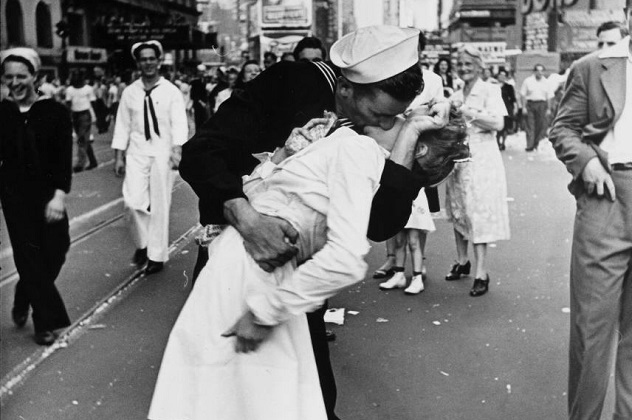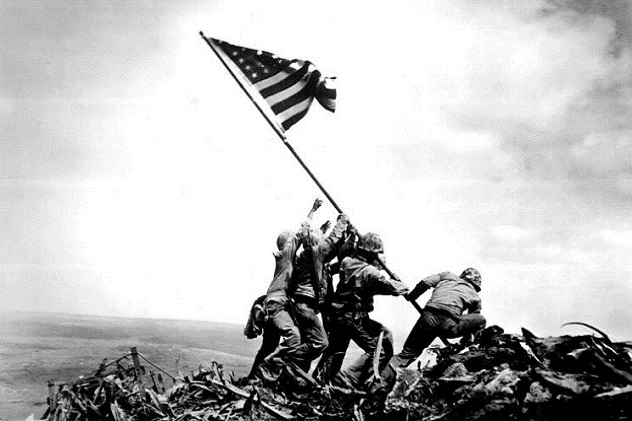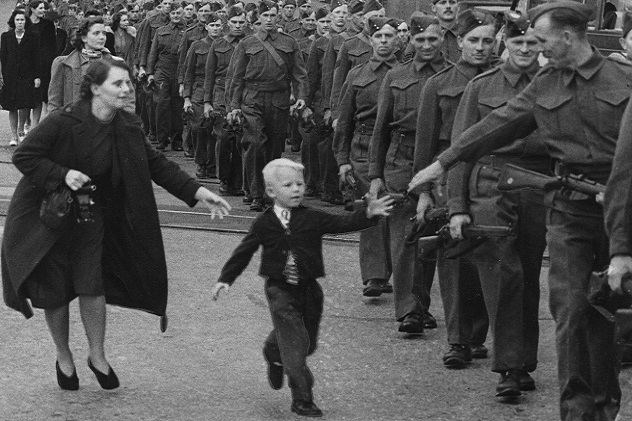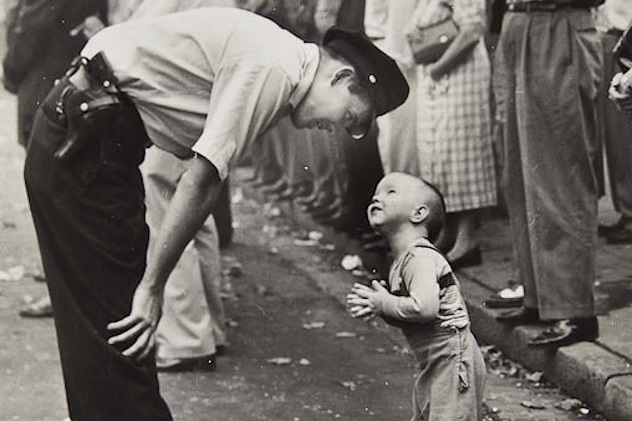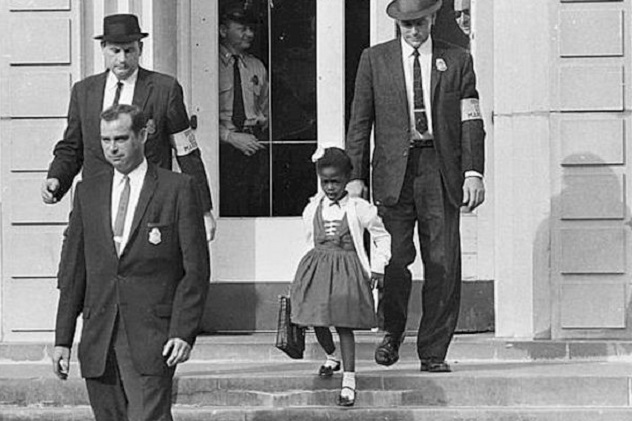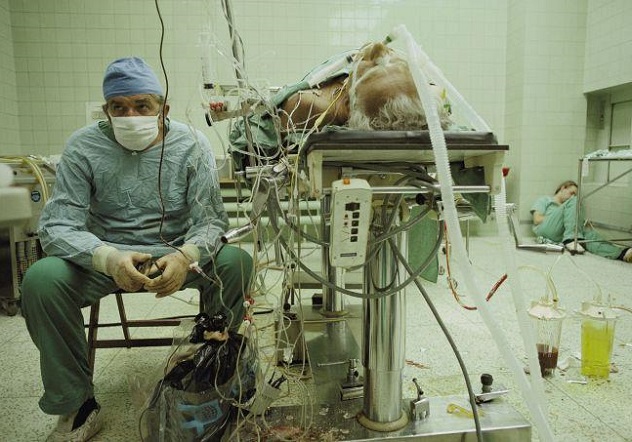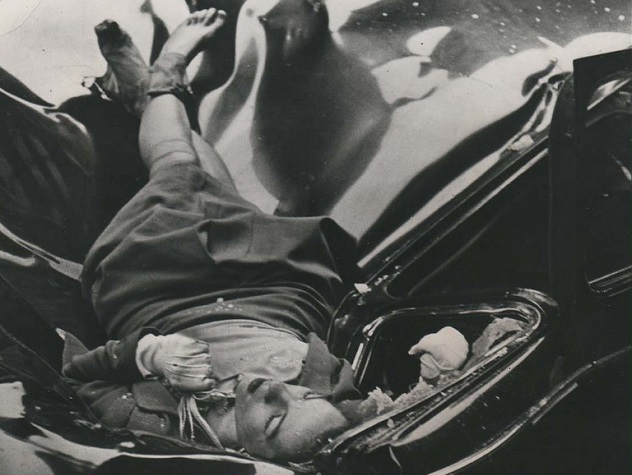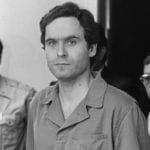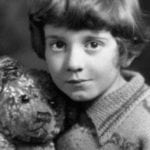10George Mendonsa And Greta Friedman
V-J Day in Times Square, which was shot by Alfred Eisenstaedt, is arguably one of the most iconic photographs from World War II. It gained infamy when it was published in LIFE magazine and became a cultural icon almost instantly. Eisenstaedt claimed that he watched as the sailor grabbed “every female he could find and kiss[ed] them all” before finding his famous nurse. The subjects’ identity was a mystery for decades after the photograph was published. One of the first women to claim she was the nurse was kindergarten teacher Edith Shain, but at 147 centimeters (4’10”) tall, it was quickly determined that she was too small to be the woman in the photograph. The real nurse wasn’t found until the identity of George Mendonsa was confirmed by matching scars and tattoos. In turn, George identified Friedman as the nurse he had kissed. On the day of the photograph, George had been at the cinema with his wife, Rita, who can also be seen in the background of the photograph. The photograph was later criticized as an insensitive depiction of sexual assault, as it was assumed that Greta had not consented to the kiss. Greta denied these allegations, insisting there was “no way there was anything bad about it.”
9Easy Company
Raising the Flag on Iwo Jima is often cited as the most reproduced photograph in history. There are six men in the photograph: four at the front (Ira Hayes, Franklin Sousley, John Bradley, and Harlon Block) and two at the back (Michael Strank and Rene Gagnon). These men had been part of the division, called Easy Company, that had just captured the mountain from the Japanese. It was not the first flag to be raised on Mount Surabachi, but the first one was too small, so Easy Company was ordered to raise a bigger flag “so every son of a b— on this whole cruddy island can see it.” Three of the men—Strank, Sousley, and Block—died soon after the flag was raised. Strank, the eldest of the men, was the first to die, killed by friendly fire. The three survivors—Gagnon, Hayes, and Bradley—handled the attention they received from their participation in the photograph in different ways, some better than others. Hayes became an alcoholic and died 10 years after the end of the war, and Bradley shied away from the publicity and bought a funeral parlor. Gagnon allegedly capitalized on the fame but quickly faded into obscurity, dying from a heart attack in 1979 while working as a janitor.
8Warren ‘Whitey’ Bernard
Wait For Me, Daddy was taken by photographer Claude P. Dettloff on October 1, 1940 in New Westminster, Canada. As he watched the British Columbia Regiment march down the street, a young boy who would later be identified as Warren Bernard ran away from his mother to say goodbye one last time to his father, Jack, who was about to go to war. The photograph was an instant success and hung in every school in British Columbia during the war. Thankfully, Jack Bernard returned home safe after fighting in France, but it wasn’t a completely happy ending. He and his wife, Bernice, had another child on the way when he left for England, and she was not happy about his decision to join up. The pregnancy later ended in miscarriage, and the two divorced soon after the end of the war. Warren, who is now 79, told newspapers that the marriage “was pretty much over when the war ended” and his father never returned home to live with them. Bernice found work she enjoyed and remarried in 1950, while Jack remarried and had two more children before passing away in 1981 at 75 years old.
7Allan Weaver And Maurice Cullinane
Faith and Confidence is a Pulitzer Prize–winning photograph from 1958 that was shot by William C. Beall. It depicts a young boy and a policeman interacting during a Chinese New Year parade in Washington, DC. The photograph was incredibly popular, featured in LIFE magazine and becoming the logo for the DC Boys Club. The picture was taken as Allan Weaver, who was two years old at the time, was trying to get closer to the colorful Chinese dragon and amazing fireworks of the parade. At the time, Weaver’s father was stationed in Japan. When Maurice Cullinane leaned down and told him to make sure he didn’t get too close, Weaver asked him if he was a marine. Maurice was relatively new to the police force and had joined because his father, grandfather, and two uncles had all served under it. In 1974, Cullinane became the chief of police, playing a key role in the 1977 Hanafi Siege before retiring the next year. Weaver went on to live a relatively normal life, moving to California and becoming Orson Welles’s personal assistant before settling into his current occupation as a lighting consultant. Both Weaver and Cullinane have the picture hanging in their living rooms.
6Jonathan Briley
The Falling Man became a jarring symbol of the events that took place on September 11, 2001. Photographer Richard Drew actually took 12 photos of the man as he fell, but this particular photograph became famous because it depicted the subject falling straight down, almost as if he were diving. It was published in The New York Times the next day. It has been estimated that over 200 people jumped from the World Trade Center that day, most of whom were trapped on the upper floors of the towers. Many also fell or were blown out of the windows. This has made it difficult to identify the subject of the photograph. The first subject suggested was Norberto Hernandez, and three other families claimed they were related to the man, but scientific analysis has discounted these theories. The most likely candidate is Jonathan Briley, who worked on the 106th floor of the North Tower for Windows of the World and was identified by colleagues, family, and close analysis of the photograph. Briley had previously been a sound engineer and lived in Mount Vernon. He was asthmatic, which means he would have suffered particularly brutally when the smoke from the crash began to rise. He was only 43 years old when he was killed.
5Ruby Bridges
This photograph was taken outside William Frantz Elementary School in New Orleans, Louisiana, which was one of the first schools in the Deep South to be integrated after the Brown vs. the Board of Education decision had legally overturned the Jim Crow laws. The photo depicts the school’s only African-American student, Ruby Bridges, being escorted to class by US Marshals. What the photograph doesn’t show is the large crowd that had gathered outside the school, shouting and throwing rocks at the young girl. Ruby admits that this was a terrifying experience, but one of the deputy marshals in the photograph, Charles Burks, remembers her as far braver than she does. “She showed a lot of courage,” he said. “She never cried. She didn’t whimper. She just marched along like a little soldier, and we’re all very, very proud of her.” This story of triumph almost never happened. Ruby’s father was afraid of the violence his daughter might encounter at the all-white school and didn’t want her to attend, but her mother convinced him otherwise. White families pulled their children out of the school, and only one teacher, Barbra Henry, agreed to teach Ruby. The US Marshals were dispatched by President Eisenhower himself to ensure the girl’s safety. Ruby had to spend the whole day in the principal’s office and was only allowed to eat food from home, as one white mother had threatened to poison her. She later became an accomplished civil rights activist.
4Zbigniew Religa
This award-winning National Geographic photograph taken by James Stanfield in 1987 depicts cardiac surgeon Zbigniew Religa tracking the vitals of a patient after a successful heart transplant while his assistant rests in the corner. The transplant had taken 23 hours, using incredibly outdated technology. At the time, while Poland’s free healthcare system had undoubtedly helped millions of people, it was also straining under a lack of funding. Religa performed most of his cardiology work and lectured in Warsaw but had also studied in New York and Detroit. He was one of the most renowned cardiologists in Poland and known as a pioneer of medical technology. He performed the first successful heart transplant in the country, and in 1995, he became the first surgeon to graft an artificial valve by creating one from materials that had been taken from human corpses. Religa later left the medical field to become a politician, serving in the Polish senate for 12 years and as the country’s health minister for two. He passed away at age 70 in 2009.
3Evelyn McHale
On May 1, 1947, Evelyn McHale walked 86 floors to the observation deck of the Empire State Building and jumped off. She landed on top of a United Nations limousine with her legs perfectly crossed. Photography student Robert Wiles was walking nearby and captured the image just minutes after McHale died. The Most Beautiful Suicide was printed 11 days later in LIFE magazine, gaining instant fame. McHale was only 23 years old and one of the youngest children in her family. She joined the Women’s Army Corps during the war and then moved to New York City with her brother and sister-in-law, where she worked as a bookkeeper. On April 30, she caught a train to Easton to celebrate her fiance’s 24th birthday. When she left, she seemed “happy and as normal as any girl about to be married.” However, when she arrived in New York City that evening, she wrote a suicide note which stated “My fiance asked me to marry him in June. I don’t think I would make a good wife for anybody. He is much better off without me.”
2Larry Wayne Chaffin
This infamous photograph was taken on June 18, 1965 in South Vietnam during the Vietnam War. It was shot by famed photographer Horst Faas, who had been traveling throughout Vietnam to capture images of the war. It depicts a soldier of the 173rd Airborne Brigade Battalion, now known to be Larry Wayne Chaffin, with the words “War is Hell” handwritten on his helmet. Chaffin’s wife, Fran, remembers that when she greeted him at the airport after he was discharged from the Army, Larry had been holding the issue of Stars and Stripes magazine that had published the photo and remarked that it was going to make him “rich sometime.” Chaffin never had the chance to get rich, unfortunately. After the war, he struggled with post traumatic stress disorder and never fully settled back into civilian life, dying just 20 years later at the age of 39 from complications of diabetes. His family strongly suspects that his condition was the result of exposure to Agent Orange during the war.
1The Chalifoux Family
At the time this photograph was taken in Chicago on August 4, 1948, Ray and Lucille Chalifoux were unemployed and facing eviction from their home. With another baby on the way, they couldn’t even afford food for themselves, let alone their children. The children (Lana, Rae, Milton, and Sue Ellen) were not sold, thankfully, and newspapers claimed that job and housing offers poured in after the photo was published in magazines across the US. Although things seemed to be looking up briefly, the father later abandoned the family. Lucille was only 24, and the next man she dated wanted nothing to do with her kids. Two years later, Lucille’s eldest son, David, was taken away from the home after he was found malnourished and covered in bug bites. The family who adopted him was loving but strict, and he ran away when he was 16 to join the military. Rae claims she was sold for $2, which was allegedly used for bingo money, while Sue Ellen and Milton were adopted by a cruel and abusive family. The children were not reunited until they were well into old age, and they have mixed opinions about their mother. Sue Ellen, who died of lung cancer shortly after the reunion, said that she hopes her mother was “in hell burning,” whereas David argued “We’re all human beings. We all make mistakes. She could’ve been thinking about the children. Didn’t want them to die.” Kitty is a history student and likes to day dream. You can read more of her musings at kittywritesstuff.blogspot.co.uk.
